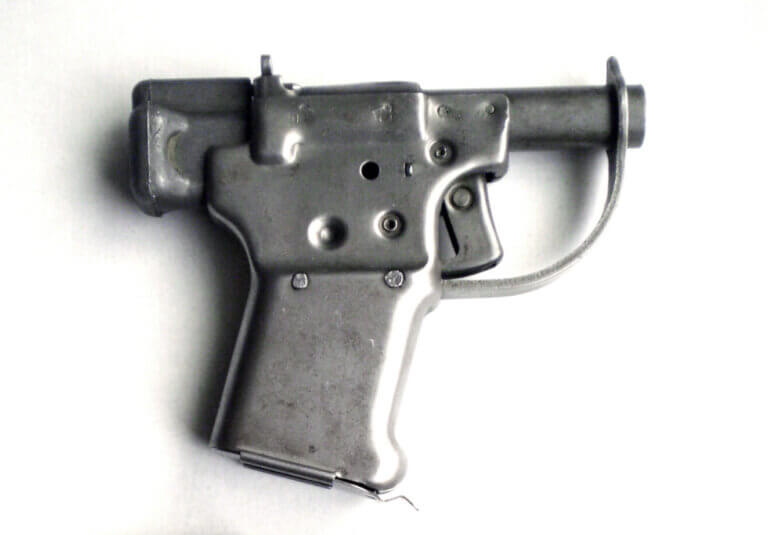
The spring-loaded trigger sat along its front facing and was lightly protected by a curved wire trigger guard. 45 ACP (five could be stored in the pistol grip) and the required wooden dowel to extract spent shell casings.©ĭesign of the FP-45 was highly utilitarian - downright crude some would say - and was characterized by its large, blocky pistol grip. The pistol - packaged in a clear plastic bag - was also delivered with ten additional rounds of. This was an interesting facet in itself for the use of pictures in the instruction set ensured no language or literacy barriers to those in reception of a ready-to-use FP-45 and very litle training in its use was actually required. Each gun was delivered with a 12-step, visual instructional pamphlet to help the operator along. It is thought that some 1,000,000 pistols were ultimately produced and the system went on to be known under the names of "Liberator", "OSS Pistol" and "M1942 Pistol". The pistol was made available from 1942 to 1945 with production handled by the Guide Lamp Corporation Division of GMC out of Anderson, Indiana. Over time, it was seen that a resistance movement would grow in number by an emboldened civilian congregation, stocking themselves with proper, frontline Axis weapons thanks to the FP-45. This then freed the said enemy's weapons for the taking. Those inclined to resist Axis forces on the ground could then recover the weapon package and make use of the smallish pistol by incapacitating a lone enemy individual. The idea behind the program was to develop a weapon suitable for air-dropping into enemy-held regions in quantity. It was an implement suitable for close-in work and was intended to promote insurgencies where possible, adding a new internal threat to Axis occupiers. The FP-45 was designed from the outset as a cheap-to-produce, easy-to-use pistol meant for mass production. Needless to say, the OSS was sold on the Army's resistance pistol concept. At its peak, the branch employed some 13,000 personnel. The OSS was formed during World War 2 to conduct operations against the enemy from behind enemy lines and operated from June 1942 to September of 1945.


The project was developed and completed in just a short span of six months from June to August of 1942 - this also encompassing the eleven weeks of required production - and the US Army eventually turned over the reins to the Office of Strategic Services (OSS), the forerunner to today's Central Intelligence Agency (CIA). This deliberate mislabeling was intended to mislead prying eyes and ears into thinking the weapon was nothing more than a signal flare gun.

The pistol was a direct product of the Army's US Army Joint Psychological Committee findings and the general designation of "FP-45" was derived from the formal designation of "Flare Projector Caliber 45" (also the "Flare Pistol M1942"). Origins of the FP-45 single-shot pistol place it as an initiative by the US Army, intending to arm clandestine and resistance forces within enemy-occupied territories across Europe and spawn liberation of nations from within, using their own motivated civilian populations.


 0 kommentar(er)
0 kommentar(er)
